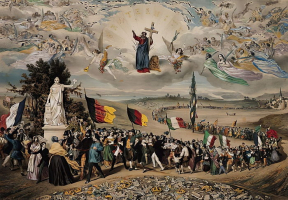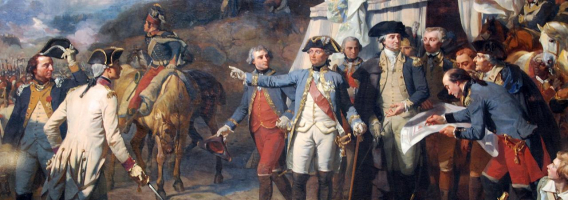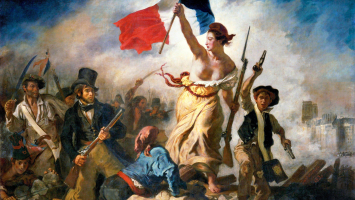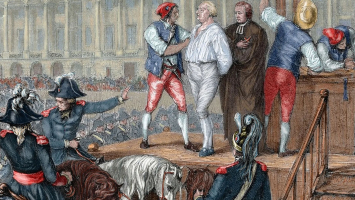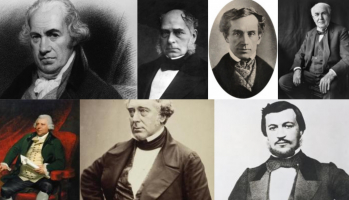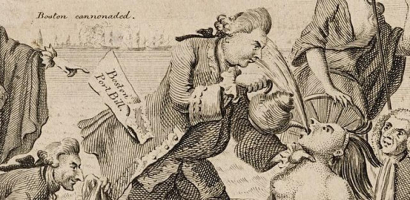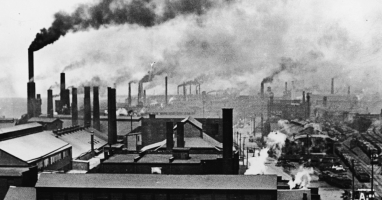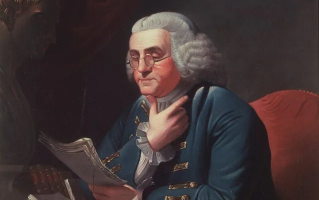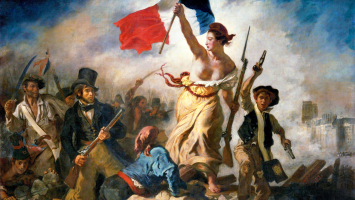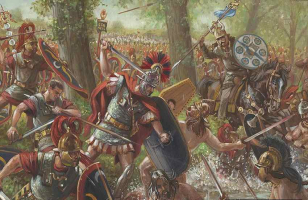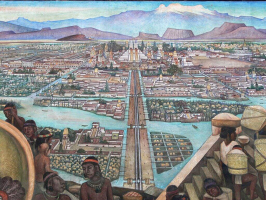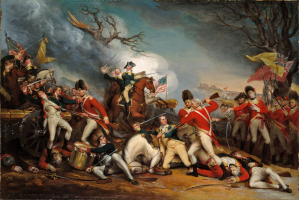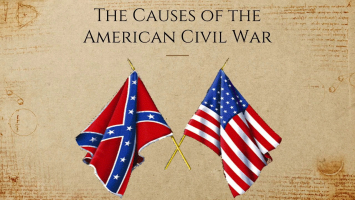Top 12 Major Events of the French Revolution and their Dates
One of the most pivotal periods in French history is the French Revolution. Due to the decades of conflicts that would follow the Revolution, it had a ... read more...significant impact on the rest of Europe. It also sparked revolutions in other countries and contributed to the abolition of European disparities such as feudalism, upper-class privileges, and inequality in general. If you are curious and want to have an overview of this historic event, these are some major events of the French Revolution and their dates.
-
The Estates-General was an assembly that represented the three groups, or "estates," that existed in France at the time: the clergy, the nobles, and the commoners, or the Third Estate.
The Estates-General had already met a number of times, but because each Estate was only given one vote, the clergy and nobility frequently banded together against the commoners, rendering them powerless.
King Louis XVI convened the Estates-General in 1789 to solve the monarchy's financial difficulties. The Third Estate founded its own National Assembly after learning more about the problem and understanding that the two other Estates might easily lay the cost of solving the issue on the commoners through taxes. The new National Assembly sought to negotiate with the clergy and nobles on May 5, 1789, but no accord was reached. Because the Estates-General had not met in such a long time, there was some discussion about which processes should be followed. Many of the contentious traditions that were the norm in 1614 but unpleasant to the Third Estate at a time when the concept of equality was paramount to public debate were retained by the King. The nature of voting remained the most contentious and significant choice.Dates: May 5, 1789
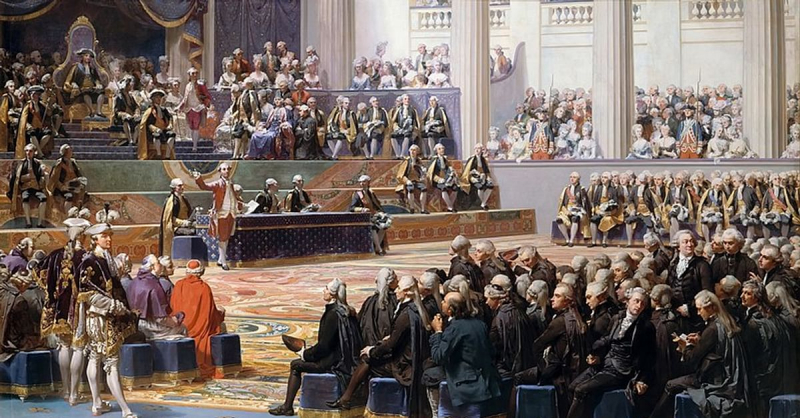
Photo: worldhistory 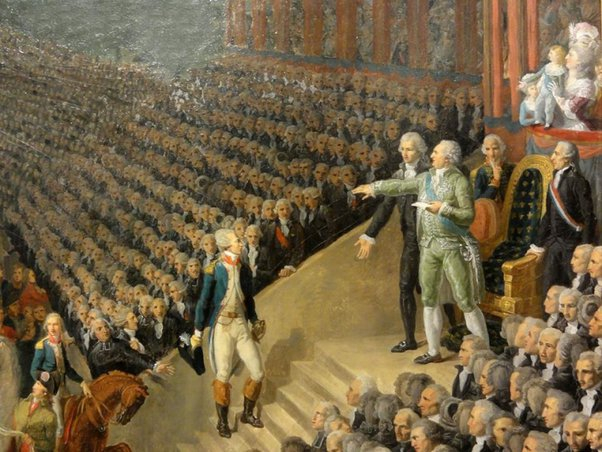
Photo: quora -
The members of the French Third Estate swore the Tennis Court Oath on June 20, 1789, in the tennis court that had been built for the purpose of the Versailles palace in 1686. "Not to part and reunite wherever necessary until the kingdom's Constitution is created," the vote said. In the French Revolution, it was a watershed moment.
The Estates-General had been summoned to handle the country's fiscal and agricultural crises, but soon after gathering in May 1789, they were mired in debates over representation, notably whether they would vote by order or by the head. The Third Estate, commanded by Honoré Gabriel Riqueti, Comte de Mirabeau, began calling themselves the National Assembly on June 17th. The deputies were surprised to find the chamber door shut and guarded by troops on the morning of June 20. They instantly feared the worst and expected a royal attack from King Louis XVI, so they gathered in a nearby indoor jeu de paume court in the Saint-Louis area of Versailles, near the Palace of Versailles, at the suggestion of one of their members, Joseph-Ignace Guillotin.
Dates: June 20, 1789
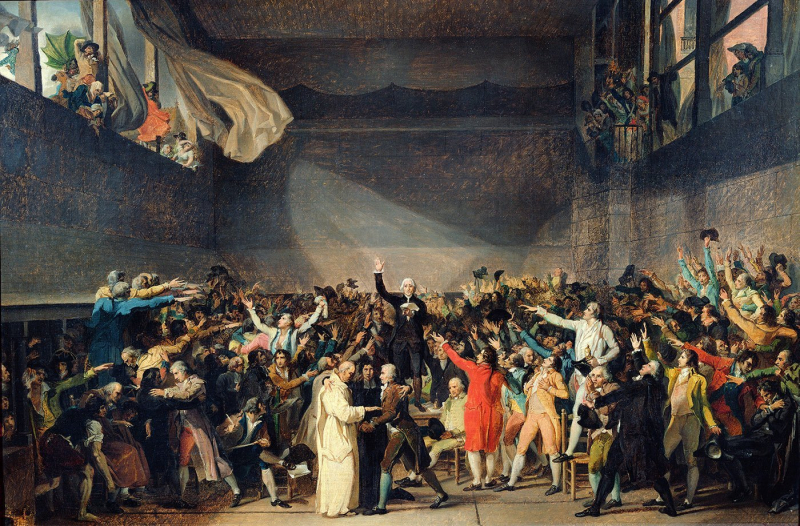
Photo: mrallsophistory 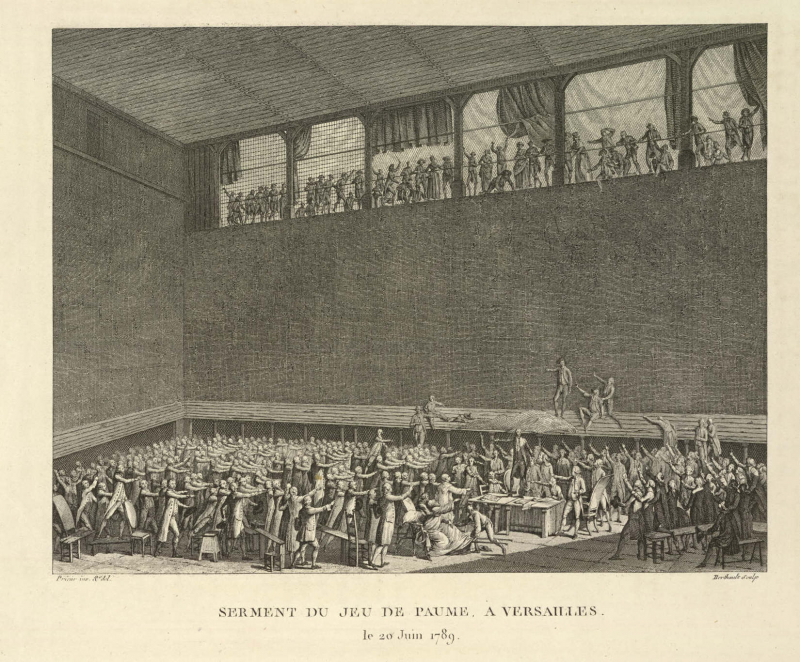
Photo: bl.uk -
Revolutionaries were fed up with the monarchy's aversion to change by July. In addition, the king fired Jacques Necker, the general director of finances. Necker was a supporter of the National Assembly, and his removal was interpreted by the French as a direct attack on the Assembly.
On July 14, 1789, a mob of enraged French citizens stormed the Bastille Prison in Paris. To be able to defend themselves against the monarchy, the rebels seized gunpowder and firearms. The Bastille forces held out for a few hours before surrendering to the mob. Some regard the collapse of the Bastille, a symbol of power and monarchy's authoritarian authority, to be the beginning of the French Revolution. As a result, King Louis XVI ordered the withdrawal of royal troops from Paris and the recall of finance minister Jacques Necker. Because of the historical significance of the storming of the Bastille, July 14 is observed as France's national day. In English, it is known as Bastille Day.
Dates: July 14, 1789
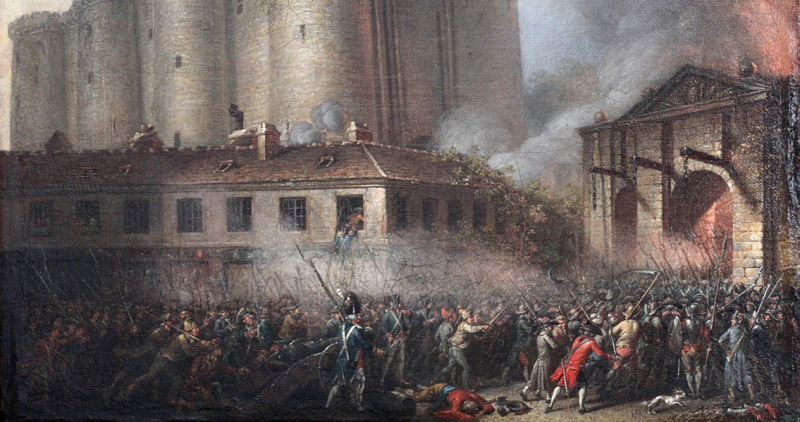
Photo: historyonthenet 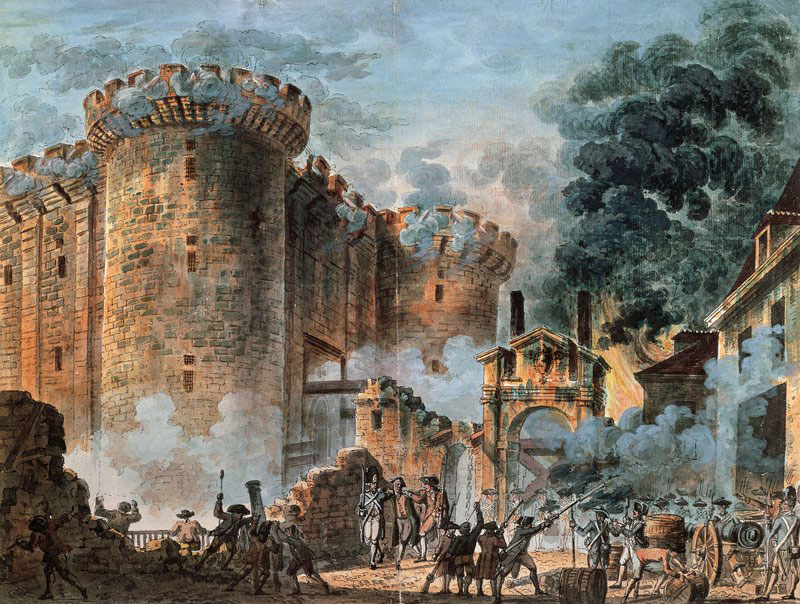
Photo: bl.uk -
One of the most important outcomes of the French Revolution was the abolition of feudalism, as well as the old regulations, taxes, and privileges that remained from the feudal era.
The ferocity of peasant rebellion throughout the country alarmed National Assembly deputies at the time; to some, it appeared as if the countryside was being devoured by the chaos that threatened all property. However, the bulk of the people were unwilling to support the insurgent peasants. Rather than condemning the violence, they attempted to pacify peasant sentiment. On August 4, liberal nobility and clergy renounced their historic feudal privileges, kicking off the session. Within hours, the Assembly had decreed "the eradication of feudalism," as well as "the repeal of the church tithe," "venality of office," "regional privilege," and "fiscal privilege." To be sure, the Assembly revised the August 4 decree a few days later to ensure that "valid" seigneurial property rights were preserved. While personal feudal servitude like hunting privileges, seigneurial justice, and labor obligations were abolished outright, most seigneurial dues were only to be removed if peasants paid compensation to their lords, which was set at 20 to 25 times the annual worth of the duty. Until 1792–93, when demand grew for the complete repeal of all seigneurial dues without compensation, the vast majority of peasants opposed that need through passive resistance.
The elimination of feudalism was critical to the establishment of a modern, contractual concept of property and an unrestricted land market. However, it had no direct impact on land ownership or the level of regular rentals and leases. Although seigneurs lost some of their traditional sources of income, they remained landowners and landlords. While all peasants acquired dignity and position, only landowning peasants saw significant economic gains. Tenant farmers discovered that the tithe they had previously paid had been added to their rent. And the Assembly did almost nothing to ensure that renters and sharecroppers had improved lease conditions, let alone ownership of the land they worked.
Dates: August 4, 1789
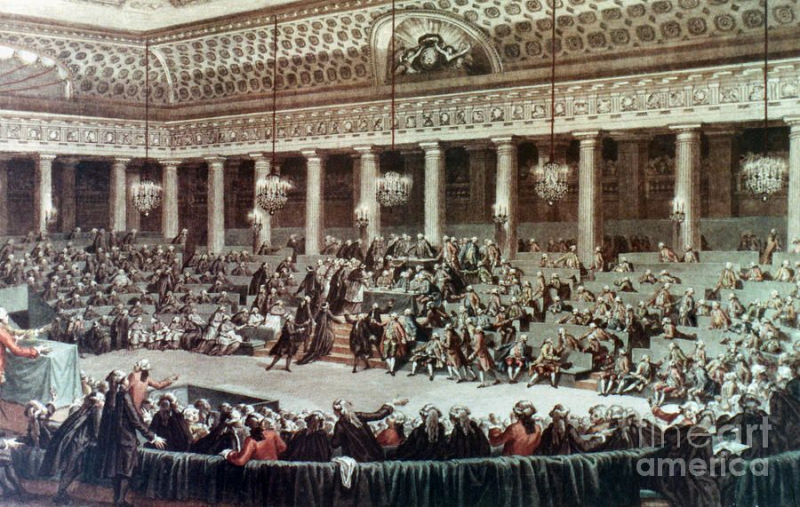
Photo: pinterest 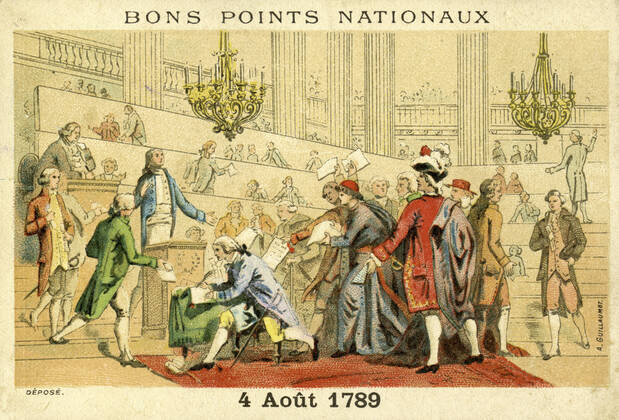
Photo: imago-images -
The Declaration of the Rights of Man and Citizen, proclaimed by the French National Constituent Assembly on August 26, 1789, articulated individual and community rights during the French Revolution. Although some delegates at the Assembly praised the Magna Carta and other constitutional documents like the United States Declaration of Independence, the Declaration ultimately rejected appeals to ancient charters of liberty, based on the principle that man's rights are natural, universal, and inalienable.
The Declaration did, however, echo Magna Carta in some key statements, such as subordinating the monarchy to the rule of law, ensuring that "no person shall be accused, arrested, or imprisoned except in those cases established by law", and ensuring that taxation could only be raised by common consent. The main author of the Declaration, Marquis de La Fayette (1757-1834), cooperated with Thomas Jefferson (1743-1826), who had been influenced by Magna Carta. In clause 1, which proclaims that "Men are born and remain free and equal in rights," Jefferson's influence is obvious. The birth of this manifesto played an important role in the revolution, so it can be said that it was one of the major events of the French Revolution.
Dates: August 26, 1789
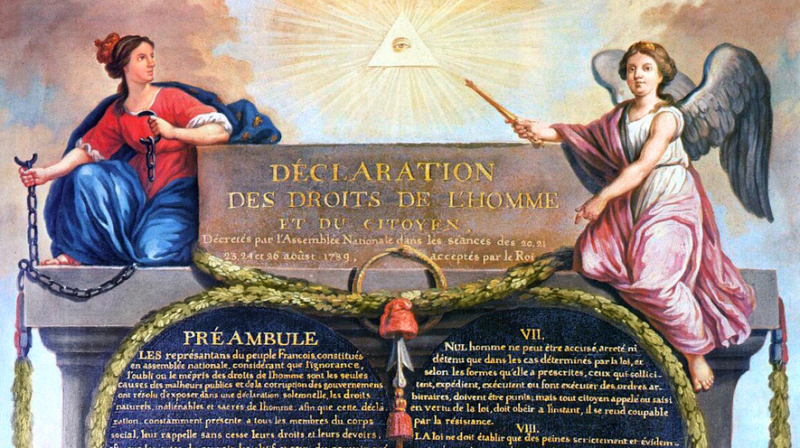
Photo: thedigeratipolitics 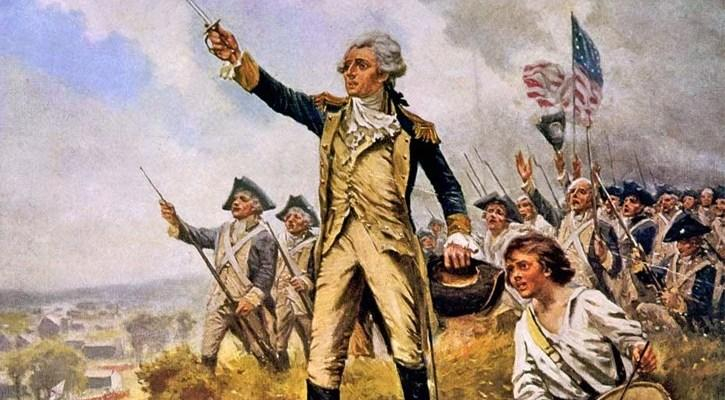
Photo: historydaily -
One of the major events of the French Revolution was the Women's March on Versailles, also known as the October March, The October Days, or simply The March on Versailles. The march began with women in Parisian marketplaces who were nearly rioting over the high price of bread on the morning of October 5, 1789. Revolutionaries advocating liberal political reforms and a constitutional monarchy for France immediately became entangled in the unrest. The market ladies and their supporters eventually expanded into a throng of tens of thousands. They raided the city armory for firearms and marched on the Palace of Versailles, aided by revolutionary agitators. The crowd surrounded the palace and successfully pressed their demands on King Louis XVI in a dramatic and violent encounter. The throng forced the monarch, his family, and the majority of the French Assembly to return to Paris the next day.
These events signaled the end of the king's independence and the beginning of a new power balance that would eventually see the established, privileged orders of the French nobility displaced in favor of the ordinary people, known as the Third Estate. The March on Versailles proved to be a defining milestone of the Revolution by bringing together the largest number of people representing the Revolution's sources.Dates: October 5, 1789
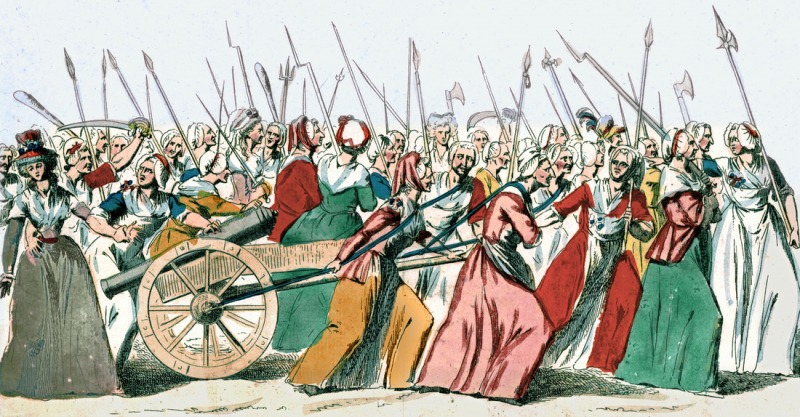
Photo: historycrunch 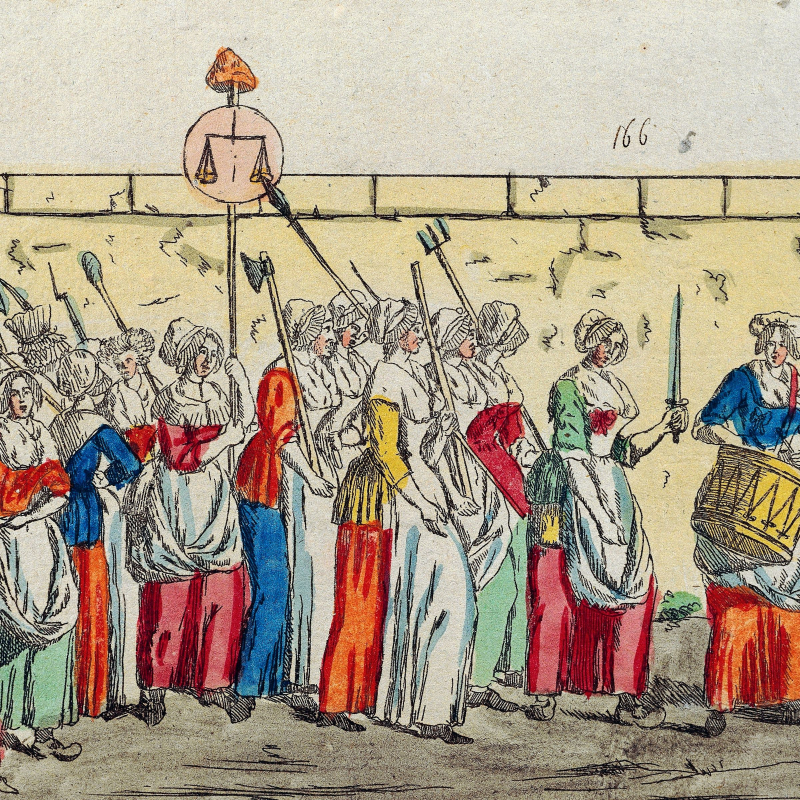
Photo: thoughtco -
The royal family was obliged to return to Paris after the Women's March on Versailles. Louis XVI tried to act within his limited powers, but he received little support. In the Tuileries, a royal and imperial palace in Paris that served as the abode of most French monarchs, he and the royal family remained virtual captives. The palace remained the king's formal residence for the next two years.
Louis XVI became emotionally paralyzed, allowing the queen to make the most critical decisions. On June 21, 1791, Louis, prompted by the queen, led his family on a disastrous escape attempt from the capital to the eastern frontier. The royal family attempts to escape from the Tuileries around midnight, with the dauphin's governess, the Marquise de Tourzel, posing as a Russian baroness, the queen posing as a governess, the king's sister, Madame Élisabeth, posing as a nurse, the king posing as a valet, and the royal children posing as the alleged baroness' daughters. The queen's favorite, the Swedish Count Axel von Fersenand and the Baron de Breteuil, orchestrated the escape with the help of Swedish King Gustavus III. Fersen had advocated for the employment of two light carriages, which would have sped up the 200-mile trip to Montmédy.
The royal family's flight was stopped after Jean-Baptiste Drouet, the postmaster of Sainte-Menehould, recognized the king from his portrait, owing to the cumulative effect of a series of blunders that, in and of itself, would not have resulted in the mission's failure. The monarch and his family were apprehended 31 miles from their final goal, the heavily guarded royalist castle of Montmédy, in the town of Varennes.
Dates: June 20, 1791
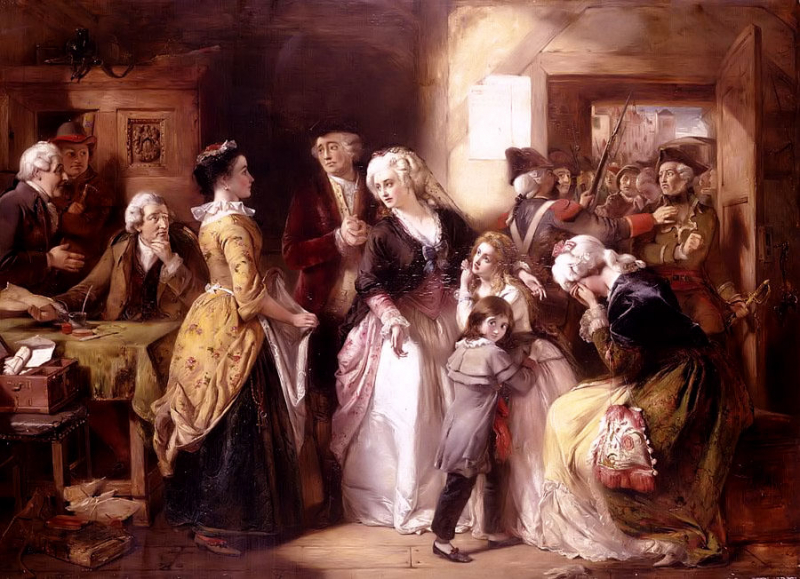
Photo: wikipedia 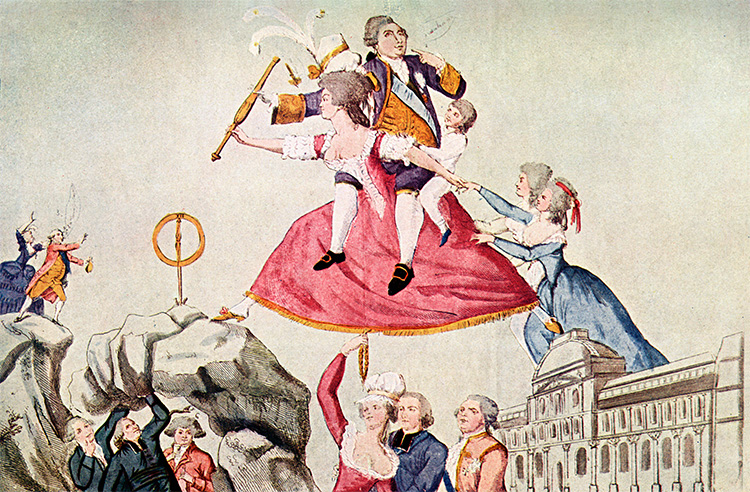
Photo: historytoday -
On the 21st of January 1793, at the Place de la Revolution in Paris, Louis XVI was publicly executed by guillotine, a crucial event of the French Revolution. The National Convention had found the monarch guilty of high treason in a near-unanimous vote on January 17, 1793; while no one voted "not guilty," some deputies abstained. They eventually found him guilty and sentenced him to death by a simple majority. Charles-Henri Sanson, then High Executioner of the French First Republic and previously royal executioner under Louis, carried out the execution four days later.
Louis' death, which was widely seen as a watershed moment in both French and European history, elicited a wide range of reactions around the world. Although Louis would not be the last king of France, his death at the hands of his former subjects marked the long-awaited end of an unbroken thousand-year reign of absolute monarchy in France and the actual beginning of democracy within the country. Others, including some who had backed substantial political reforms, denounced the execution as a pointless act of killing, seeing it as proof that France had fallen into a state of violent, amoral disorder.
Louis' death empowered French revolutionaries, who would go on to drastically alter the country's political and social structure over the next few years. Nine months after Louis' death, his wife Marie Antoinette, a previous queen of France, was executed at the same spot in Paris by the guillotine.
Dates: January 21, 1793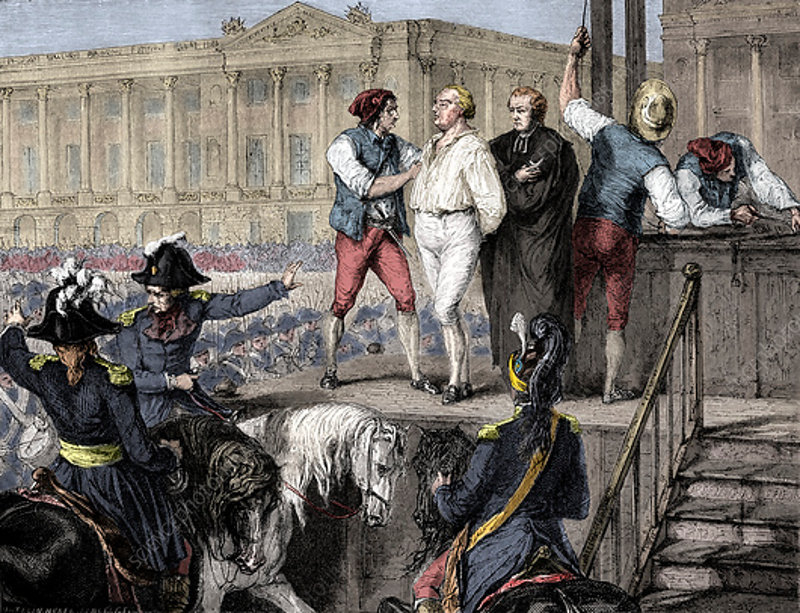
Photo: sciencephoto 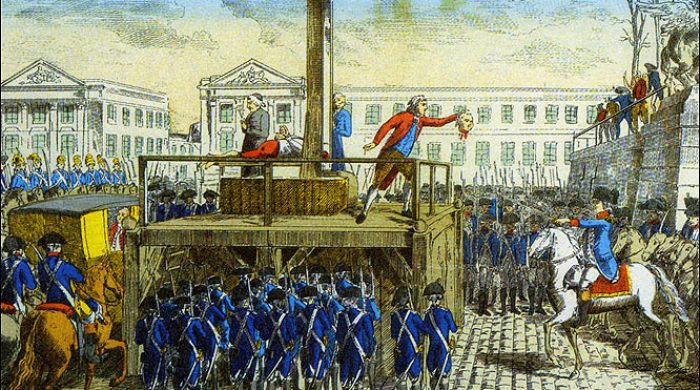
Photo: twitter -
The French Revolution's Reign of Terror, often known as the Terror, lasted from September 5, 1793, until July 27, 1794. With civil war spreading from the Vendée and hostile forces on all sides, the Revolutionary government decided to make "Terror" the order of the day (September 5 edict) and take harsh measures against individuals suspected of being revolutionaries (nobles, priests, and hoarders). A wave of executions followed in Paris. Representatives on mission and surveillance committees in the provinces created local terrors. The Terror had an economic side, which was expressed in the Maximum, a price-control measure requested by Paris' poorer classes, and a theological side, which was embodied in the Christianization program undertaken by Jacques Hébert's supporters.
During the Terror, the Committee of Public Safety (of whom Maximilien de Robespierre was the most notable member) controlled the French government in a dictatorial manner. It defeated its opponents on the left (the Hébertists) and the right (the Whigs) in the spring of 1794. (the Indulgents, or followers of Georges Danton). Still undecided, the committee gained the Law of 22 Prairial, year II (June 10, 1794), which suspended a suspect's right to a public trial and legal representation and gave the jury only the option of acquittal or execution. The "Great Terror" that followed, which resulted in the execution of around 1,400 people, contributed to Robespierre's downfall on July 27.
At least 300,000 individuals were arrested during the Reign of Terror; 17,000 were officially executed, and perhaps 10,000 were perished in prison or without trial.Dates: September 1793 - July 1794
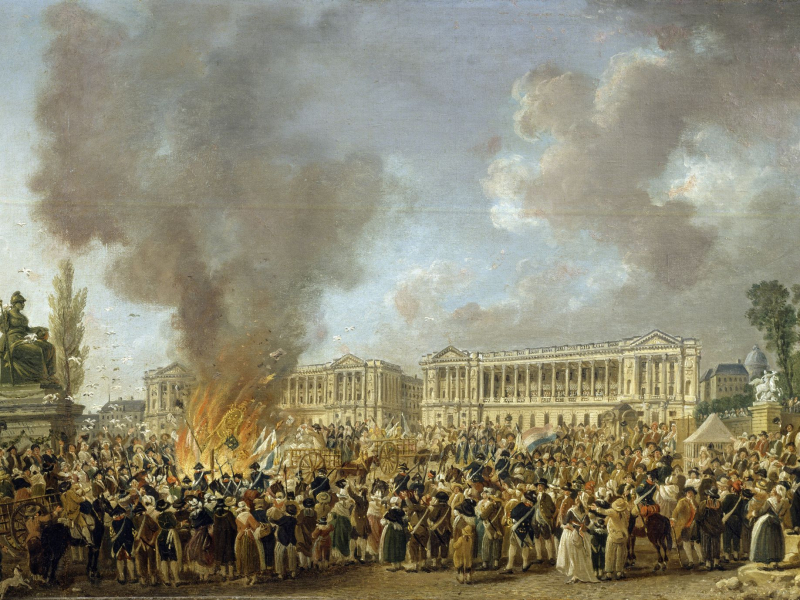
Photo: thoughtco 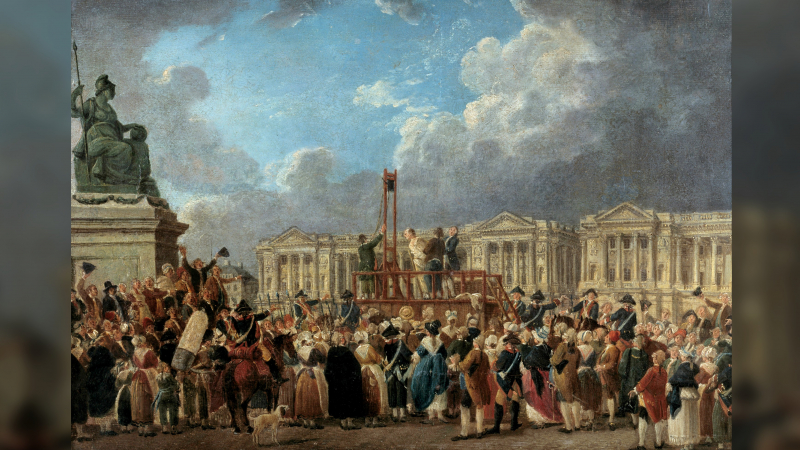
Photo: livescience -
The Coup d'état of 9 Thermidor, also known as the Fall of Maximilien Robespierre, was a series of events that began with Maximilien Robespierre's speech to the National Convention on 8 Thermidor Year II (26 July 1794), and continued with his arrest the next day, and ended with his execution on 10 Thermidor Year II (28 July 1794). Within the Convention and the ruling Committees, Robespierre warned of internal opponents, conspirators, and calumniators in his speech of 8 Thermidor. The deputies were concerned that Robespierre was planning another purging of the Convention because he refused to name them.
This tension in the Convention allowed Jean-Lambert Tallien, one of the conspirators named in Robespierre's condemnation, to turn the Convention against him and order his arrest the next day. Robespierre was killed the next day in the Place de la Revolution, where King Louis XVI had been executed a year before. Like the others, he was guillotined to death.
Dates: July 28, 1794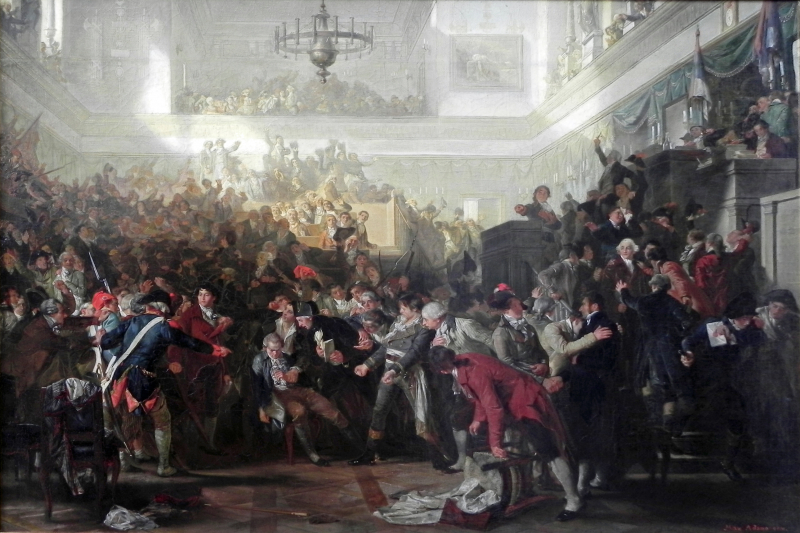
Photo: wikipedia 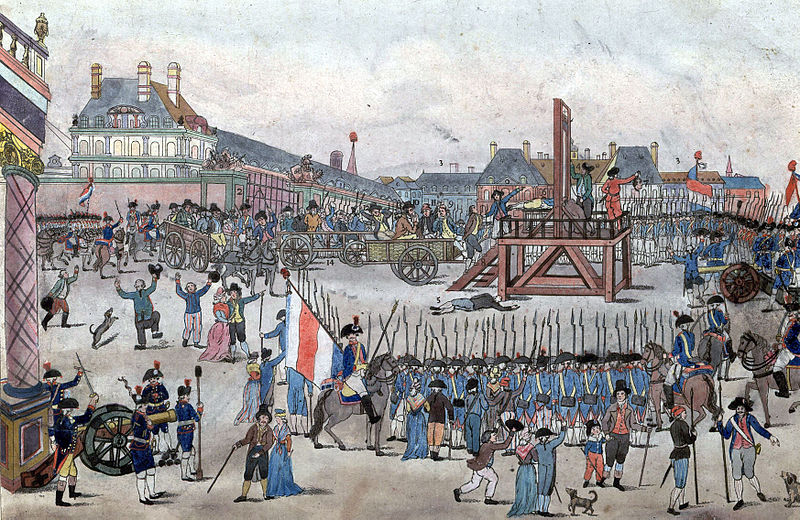
Photo: legallegacy.wordpress -
The coup d'état of 18–19 Brumaire (November 9–10, 1799) destroyed the Directory's form of governance in France and replaced it with the Consulate, paving the way for Napoleon Bonaparte's autocracy. The incident is frequently regarded as the end of the French Revolution.
In the waning days of the Directory, Abbé Sieyès and Talleyrand plotted the assassination with the help of General Napoleon Bonaparte, who had returned to France from the ill-fated Egyptian expedition to triumphant applause. On November 9, 1799, in Paris, the legislative Council of Ancients, led by Sieyès, voted to have both the Ancients and the lower house, the Council of Five Hundred, meet the next day in the palace at Saint-Cloud, ostensibly to protect the councils from a purported "Jacobin plot" in Paris, but in reality to put the councils in a convenient location away from the city and under the threat of Bonaparte's troops.
Bonaparte blundered through a speech before the Ancients the next day, 19 Brumaire, and was afterward confronted with a storm of insults in the meeting site of the Five Hundred, whose members, hearing tales and seeing troops all around, began to perceive the true conspiracy that was building. Bonaparte fled the hall, but Sieyès, Lucien Bonaparte, and Joachim Murat rallied the troops, dissolving the Five Hundred, and forcing the Ancients to decree the end of the Directory (and itself) and the establishment of a new consular government led by the First Consul Bonaparte and assisted by consuls Sieyès and Roger Duclos. Bonaparte had installed himself in the Luxembourg Palace by November 14th.
Dates: November 9-10, 1799
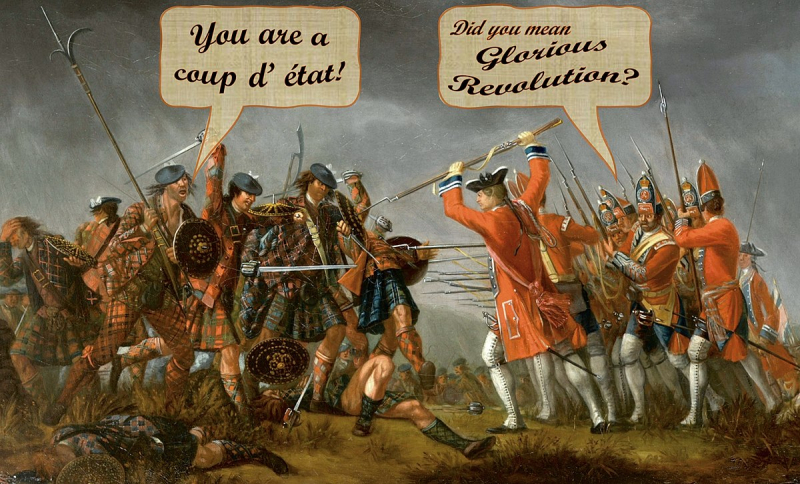
Photo: wikiquote 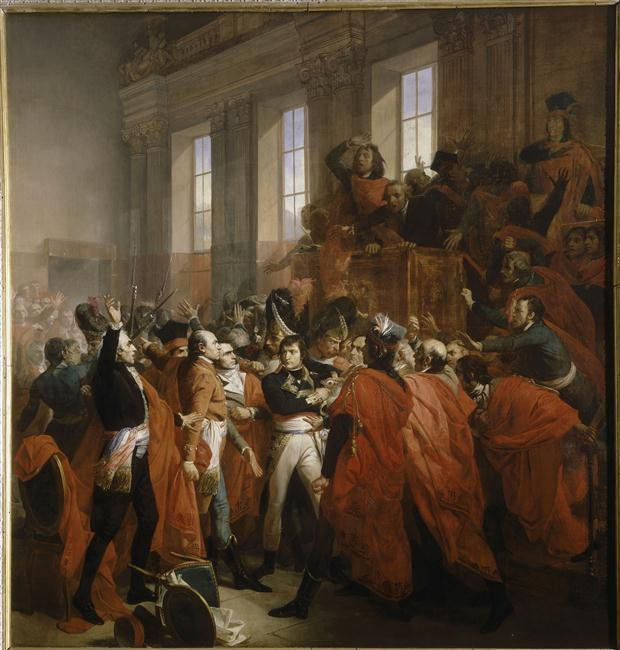
Photo: napoleon -
From 1792 until 1802, the French Revolutionary Wars were a series of large-scale military battles. France was arrayed against the United Kingdom, Austria, the Holy Roman Empire, Prussia, Russia, and a number of other monarchies. They are separated into two periods: the First Coalition War and the Second Coalition War. Initially confined to Europe, the conflict grew to include the entire globe. France had conquered lands in the Italian Peninsula, the Low Countries, and the Rhineland in Europe after a decade of relentless conflict and hard diplomacy, but had abandoned Louisiana in North America. The triumph of the French in these conflicts assured the spread of revolutionary ideas throughout much of Europe.
The other European kingdoms were outraged by the revolution and its upheavals as early as 1791, and they debated whether to act, either in support of King Louis XVI to prevent the revolution from spreading, or to profit from the instability in France.
Dates: April 20, 1782 to March 25, 1802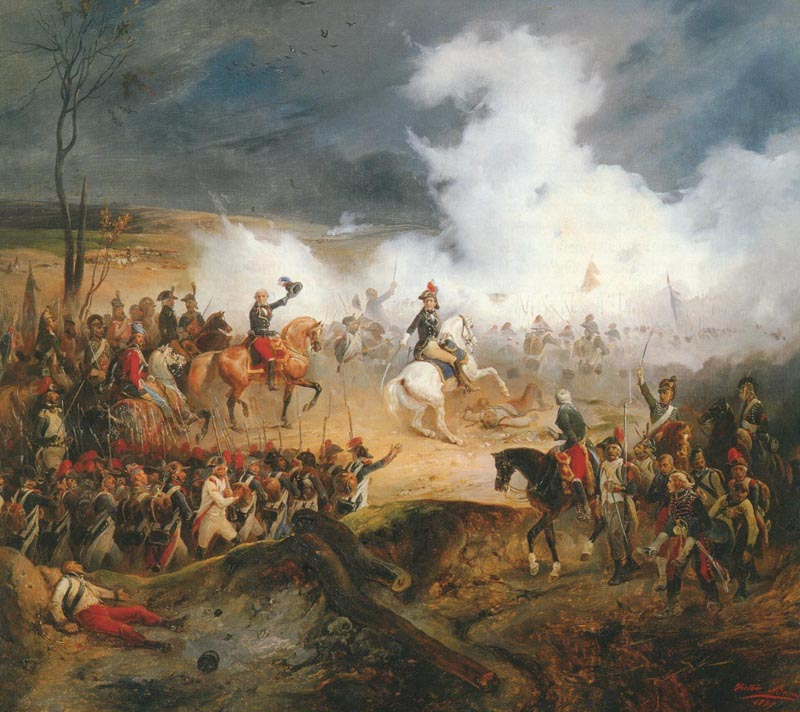
Photo: wikipedia 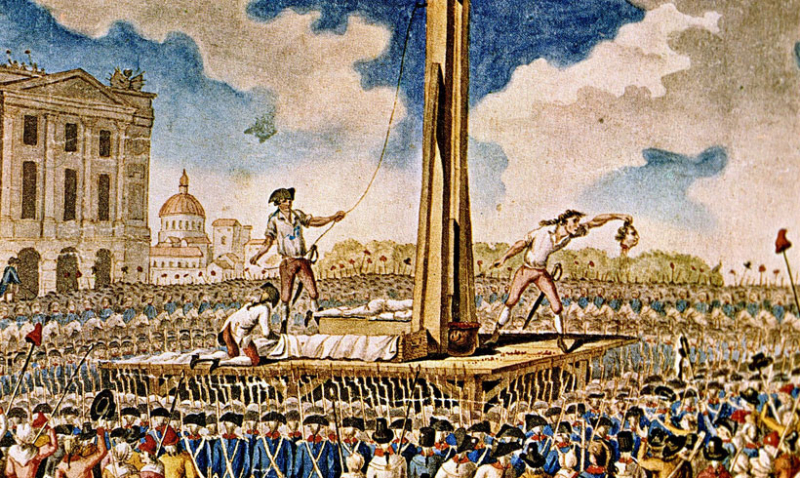
Photo: infobooks














